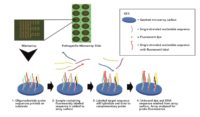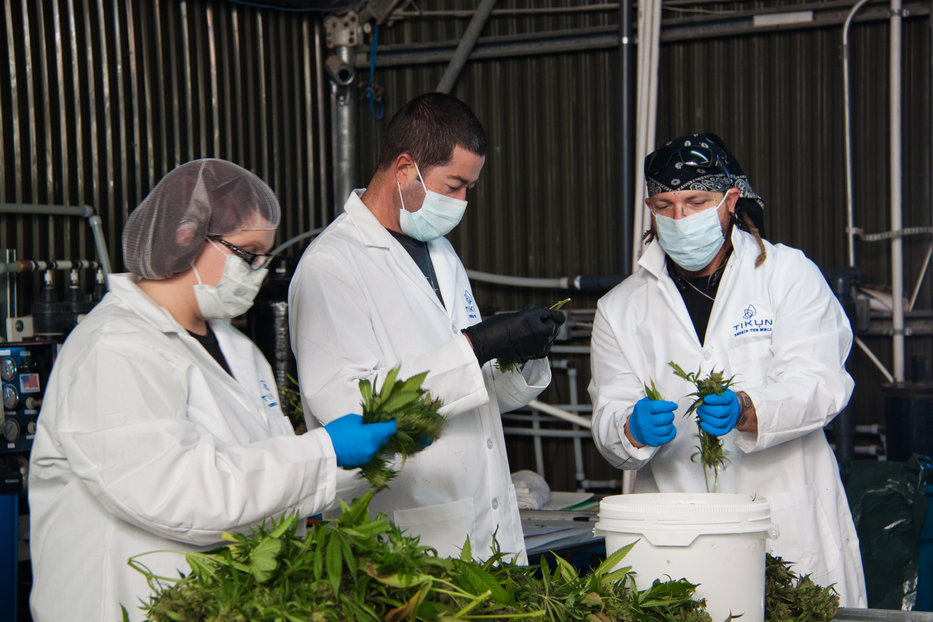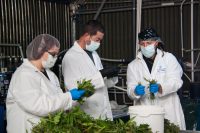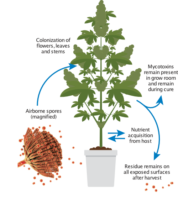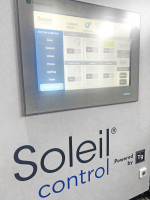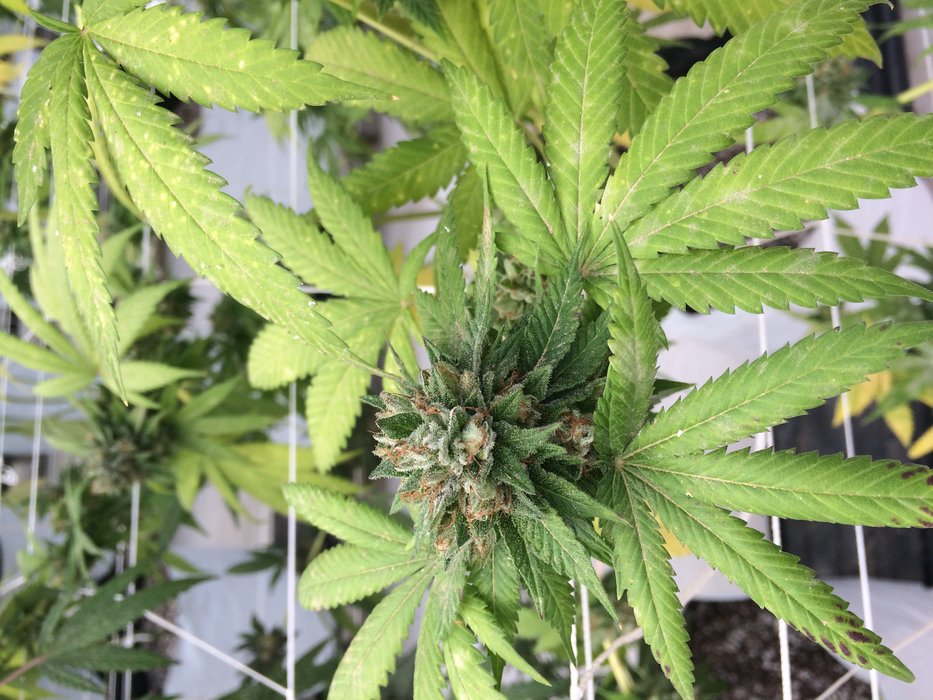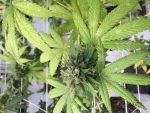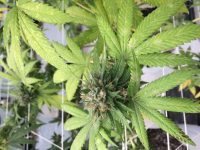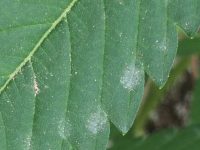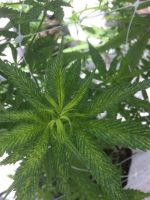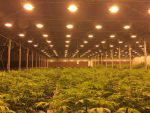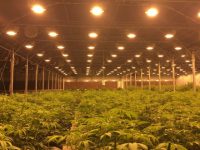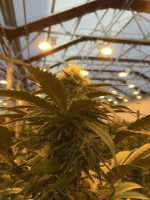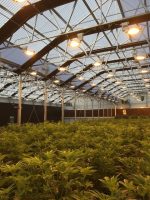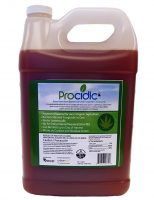Cannabis legalization has taken the United States by storm, with 33 states approved for medicinal cannabis use — 11 of which are also approved for recreational use for adults aged 21 and over. With new patients and consumers entering the market every day, it’s more important than ever for cannabis cultivators to establish more effective methods for mold and fungal prevention in their crops and to ensure consumer confidence in their brands.
Today, many cultivators address the risk of mold and fungus growth by testing crops for contaminants at the end stage of production. While this helps to catch some infected product before it reaches the market, this method is largely ineffective for mold and fungal prevention during the cultivation process. In fact, recent studies have shown an 80% failure rate in mold and fungal testing in Denver cannabis dispensaries. By relying on late-stage, pass/fail testing, cannabis entrepreneurs also expose themselves to increased risk of lost crops and profits.

However, emerging sensor technologies exist that can test plants during the grow process, significantly reducing the risks associated with cannabis cultivation while increasing the bottom line for commercial grow operations. By leveraging data from these monitoring sensors along with environmental automation systems that are integrated with data analytics platforms, cannabis professionals can take a proactive approach to achieve the ideal environmental conditions for their crops and prevent against mold and fungal infestation.
Common Causes for Bud Rot in Indoor Growing Systems
Botrytis cinerea — commonly known as “bud rot” — is a pathogenic fungi species that creates a gray mold infection in cannabis plants. An air-borne contaminant, it is among the most prevalent diseases affecting marijuana crops today and can lead to significant damages, particularly when left untreated during post-harvest storage. Bud rot is one of the most difficult challenges cannabis entrepreneurs face: Once plants have been affected, only 2% can be expected to recover. This is because Botrytis cinerea can use multiple methods for attacking host plants, including using the plant’s natural defenses against it to continue infestation.
While difficult to contain, bud rot is very easy to spot. Plants affected with the fungus will begin yellowing, experience impaired growth, and develop gray fungus around its buds. Overall crop yield will be significantly reduced, leading to decreased profit for cannabis cultivators. The biggest contributing factors to a Botrytis cinerea infestation are as follows:
- Humidity: Indoor grow facilities that maintain humidity levels in excess of 45% are breeding grounds for mold and fungus. These environments can become perfect conditions for mold and fungal growth.
- Temperature: Bud rot typically thrives in environments where temperatures fall between 65- and 75-degrees Fahrenheit, which is why greenhouses and grow rooms are often the victim of such infestations.
- Ventilation: Poor airflow is another contributing factor to Botrytis cinerea Without proper ventilation, excess moisture buildup will eventually result in mold and mildew growth.
- Strain: Some marijuana strains are better equipped to fend off bud rot infection. In particular, sativa plants have a higher resistance to mold development than their C. indica and C. ruderalis cousins.
Controlling mold and fungal growth in commercial grow facilities is a top priority for cannabis cultivators. Not only detrimental to their profitability and crop yield, infected plants can pose serious health risks to consumers, especially for immunocompromised patients. Consuming cannabis products that have been compromised by bud rot or other mold and fungal infections can cause a wide range of medical concerns, including pneumonitis, bronchitis, and other pulmonary diseases. As a result, growers are required to dispose of all infected plants without the possibility to sell.
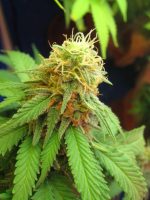 Bud rot isn’t the only culprit responsible for cannabis plant destruction. Powdery mildew, Fusarium, sooty molds, and Pythium all contribute to the challenges faced by cannabis professionals. In fact, a recent study conducted by Steep Hill Labs and University of California, Davis – Medical Center found that in 20 randomly-selected samples submitted for testing, all samples showed detectable levels of microbial contamination7. Many of these samples also contained significant pathogenic microorganism contamination. Without proper detection and prevention methods in place, these pesky plant-killers will only continue to terrorize the cannabis cultivation industry.
Bud rot isn’t the only culprit responsible for cannabis plant destruction. Powdery mildew, Fusarium, sooty molds, and Pythium all contribute to the challenges faced by cannabis professionals. In fact, a recent study conducted by Steep Hill Labs and University of California, Davis – Medical Center found that in 20 randomly-selected samples submitted for testing, all samples showed detectable levels of microbial contamination7. Many of these samples also contained significant pathogenic microorganism contamination. Without proper detection and prevention methods in place, these pesky plant-killers will only continue to terrorize the cannabis cultivation industry.
The Current Cannabis Cultivation Landscape
The data is clear: Current practices for cannabis cultivation are insufficient for preventing against mold and fungal growth. Sterilization and pass/fail testing do not identify the root cause of harmful infestations in plants, therefore leaving cannabis professionals in the dark about how to better optimize their grow conditions for improved crop reliability and safety. In order to prevent against damages incurred from mold and fungal infestation, marijuana growers must be more diligent in their grow condition monitoring practices.
Many cannabis professionals rely on manual monitoring to identify environmental changes within their indoor grow facilities. While it’s important to collect data on your operation’s essential systems, doing so without the right tools can be time-consuming and ineffective. Manual monitoring often relies on past data and does not illustrate the relationship between different systems and their impact on environmental changes. The goal is to assemble data from all the grow systems and create correlations on actual bio-environmental conditions during the grow process to compare to yield results. This is only available when an information management platform is synthesizing data from all the systems within the grow facility and presenting meaningful information to the growers, facility operators and owners.
Especially as the cannabis industry is expected to grow exponentially in coming years, growers need more robust tools for tracking and manipulating environmental changes within their indoor growing systems.
Leveraging Building Automation Systems & Data Analytics in Cannabis Cultivation
A powerful approach to prevent environmental conditions that are known to lead to mold and fungus growth exists in leveraging the data produced from your grow facility’s various automation systems. Most commercial cultivation facilities have multiple stand-alone and proprietary systems to control their indoor environment, making it difficult to not only collect all of this valuable data, but also to achieve the level of grow condition monitoring necessary for mold and fungal prevention.
With some data analytics platforms, such as GrowFit Analytics, data is collected across disparate systems that don’t normally communicate with one another, providing access to the key insights necessary for achieving environmental perfection with your cannabis crops. A viable solution collects vital grow facility system data and relevant bio-environmental monitoring data, and delivers this information in one, centralized software interface. The software then will apply analytic algorithms to develop key performance indicators (KPIs) while working to detect system anomalies, faults, and environmental fluctuations. The right analytics solution should also be customizable, allowing you to track the KPIs that are most important to your unique facility, and to achieve the vision of your chief grower. Ultimately, the software should serve up actionable insights that empower facility management and growers.

Collecting reliable data from different grow facility systems and environmental sensors can be a complex process and the information collected illustrates more than just what’s working right and what isn’t. By implementing an advanced data analytics solution, cannabis cultivation professionals can now be empowered to track minute details about their indoor grow facility, providing a safer, healthier environment for their crops and avoiding those environmental conditions that lead to mold and fungus altogether.
An ideal data analytics platform won’t simply collect data to be analyzed at a later date, and simple trending of sensor data is not enough. Information — especially in a commercial grow facility — is time-sensitive, which is why growers should select a system that offers real-time analytics capabilities. Some platforms offering real-time analytics utilize cloud computing, allowing for easy access from anywhere while also providing enhanced security to protect sensitive facility data. The most robust data analytics platforms provide detailed historical data for your entire crop’s lifecycle that provide a “digital recipe” to replicate successful crops, and fine-tune the process for continuous improvement.
Data analytics tools can also impact the bottom line by lowering operational costs. GrowFit Analytics, for example, was born out of a software solution designed to lower energy costs for large complex buildings like commercial grow facilities.
The data and insights provided can help identify opportunities for greater energy efficiency, which can lead to significant utility savings. Grow facilities operate 24 hours/day, with energy expenses representing one of the largest operational costs. With data analytics tools at their disposal, facility managers are armed with the information they need to improve system efficiency, increase energy savings, and improve profitability.
Eliminating Mold & Fungus from the Future of Cannabis Cultivation
By focusing on grow condition monitoring using data analytics tools, cannabis professionals can effectively eliminate the risk of mold and fungus growth in their crops. Leading data analytics tools make tracking environmental changes simple and easy to manage, allowing cannabis professionals to take a proactive approach to mold and fungus prevention. As we look to the future of the cannabis cultivation industry, it’s paramount for professionals to explore the technological advancements available that can help them address their business’ most pressing challenges.







